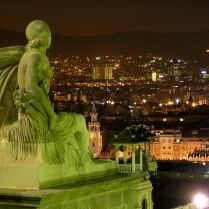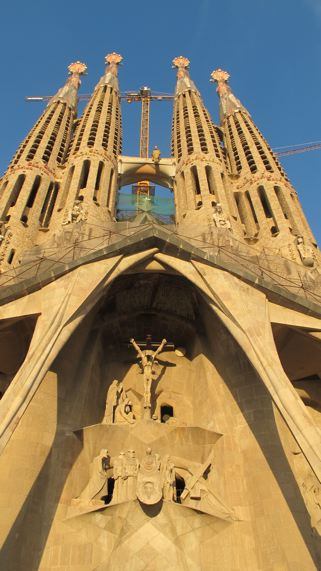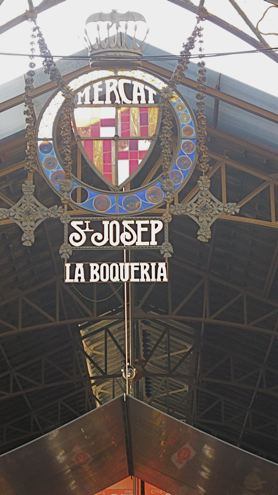 Irvina Lew first visited Barcelona, Spain, during the 1992 Summer Olympics, and returned on another sporting mission: the announcement of an international sailing race between New York and Spain. In between interviewing skippers, she explored the city’s art, culture and hotel scene.
Irvina Lew first visited Barcelona, Spain, during the 1992 Summer Olympics, and returned on another sporting mission: the announcement of an international sailing race between New York and Spain. In between interviewing skippers, she explored the city’s art, culture and hotel scene.
I’m in Barcelona, a chic, cosmopolitan port city that I first visited in 1992, during the Juegos Olimpiados.
I’m reminded of those games the week that the Winter Olympics 2010 are attracting attention to Vancouver and Whistler.
At the summer games, in ’92, I had the good fortune to be in the tennis stadium seated smack in front of Magic Johnson and have a framed photo to prove it! Upon exiting, three giants from the Dream Team—Charles Barkley, Patrick Ewing and David Robinson—grinned when we handed them my cousin’s VIP tickets from NBC.
 It’s almost 18 years later and I still relish a water view. So, you can imagine how pleased I was that my window-walled room at the new W Barcelona views the Mediterranean, 12 floors above the harbor where I boarded the Wind Surf in 2000, and disembarked from the same five-masted, 300-passenger vessel in 2004 on which we spent a total of three memorable weeks sailing the Mediterranean.
It’s almost 18 years later and I still relish a water view. So, you can imagine how pleased I was that my window-walled room at the new W Barcelona views the Mediterranean, 12 floors above the harbor where I boarded the Wind Surf in 2000, and disembarked from the same five-masted, 300-passenger vessel in 2004 on which we spent a total of three memorable weeks sailing the Mediterranean.
The W—known locally as “La Vela” because of its dramatic sail shape—adds a new architectural star to a city boasting structures by Mies van der Rohe, Frank Gehry, Richard Meier, and I.M. Pei. Among the few high-rises, not even the spaceship-shaped office building obstructs the striking backdrop of Tibidabo Mountains and Montjuic castle, circa 1640. (The cable car to Montjuic is located across the street from the W Hotel.)
Each edifice enhances the city famous for Antonio Gaudí’s magical modernist masterpieces: Casa Milá (circa 1906), a UNESCO World Heritage Site, where visitors can tour the art nouveau Pedrera apartment and stroll the chimney-studded rooftop patio; Casa Battló—with its wave-like curvaceous balconies; and the mosaic-tiled glory of Parque Guell. Gaudi began his unfinished lifetime endeavor, Sagrada Familia, in 1882. Today, about €35 million (from annual admission and souvenir revenue) covers costs for the continual construction and eventual completion of its candle dripping-like spires.
Gaudi is to Barcelona as Edvard Munch (of The Scream fame) is to Oslo, Norway. Check out Peter’s Radio Show from Oslo, Norway.
Street sculpture by Roy Lichtenstein and Joan Miró (there’s also a Miró museum) vie for attention with the monument to Columbus at the Plaza Colón, which, like Barcelona itself, faces the Mediterranean across to Italy. (The French border is just 100 miles north along the coast).
 This exceedingly international city offers art, music, culture and dozens of Michelin-starred restaurants that feature fresh, local seafood. Its regional Catalán identity is so powerful that in a recent election (in January 2010), 82 percent of Barcelona’s population voted for bilingual movies, i.e. Catalán and Castillan (Spanish).
This exceedingly international city offers art, music, culture and dozens of Michelin-starred restaurants that feature fresh, local seafood. Its regional Catalán identity is so powerful that in a recent election (in January 2010), 82 percent of Barcelona’s population voted for bilingual movies, i.e. Catalán and Castillan (Spanish).
I was in Barcelona for the meeting called by the Fundació Navegació Oceànica Barcelona (FNOB) announcing the New York to Barcelona race and an attempt for a new Transoceanic Record across the Atlantic.
This matched sailing race between two sister ships (both part of the International 60-feet Monohull Open Class Association, or IMOCA 60) is being planned with the New York Sports Commission for the second week of April, 2010. The yachts, which are named for their sponsors—the W Hotel and the Estrella Damm (Barcelona beer)—will depart from Ambrose Lighthouse and sail 3,750 nautical miles to the W Hotel with short-handed crews (three sailors per yacht) representing the co-hosts of the event: Real Club Náutico de Barcelona (where King Juan Carlos is a member) and New York Yacht Club.
The attempt is to establish a benchmark record for the course, bring together two great port cities and educate children who will learn about the world of transoceanic racing, weather and geography. (Readers can follow the race from its inception to its finish line on www.ny-bcn.org.)
More Barcelona travel tips: Off the Brochure Travel Guide: Barcelona, Spain.
This race precedes the Around the World Race which leaves Barcelona on December 31, 2010, but my race wasn’t over. Before leaving Barcelona I had to check out the Mandarin Oriental for a spa treatment and lunch. It’s an extraordinary mid-century modern former bank on Passeig de Gracia that was converted into a 98-room luxury hotel with a rooftop pool terrace that opened Thanksgiving week in 2009.
 It is ideally located near Plaza Catalunya and the famous La Rambla, where tourists ogle at the bird market and at street performers (tip if you take a picture) while locals shop at La Boquería, go to theater at the Liceu and frequent the Opera.
It is ideally located near Plaza Catalunya and the famous La Rambla, where tourists ogle at the bird market and at street performers (tip if you take a picture) while locals shop at La Boquería, go to theater at the Liceu and frequent the Opera.
The 10,000-square-foot MO spa features an ultra-wide angular corridor that resembles an Asian street scene where each of the eight treatment room appears like a separate, though connected, house. Two multi-room couple’s suites are beyond lavish; one has its own lounge, soaking tub and rainforest showers. There’s an Oriental Herbal Steam Room, an indoor swimming pool and up to the minute fitness center, too. For lunch, I ordered what turned out to be the best tapas of my two-week trip to Spain—the gambas al ajillo (shrimp in garlic sauce) were fabulous.
Then I taxied over to the Sants railroad station in time to board the 3 p.m. AVE high-speed train to Madrid.
No speed records were set, but the AVE traveled 313 miles from Barcelona to Madrid in less than three hours!
By Irvina Lew for PeterGreenberg.com. Irvina Lew is a writer who specializes in travel and spas. She is also the author of Romantic Weekends In and Around New York.
Times are changing–find out what’s ahead in Travel Trends 2010.
Caught Olympic fever? Don’t miss our Olympics Travel section.
More Barcelona travel tips: Off the Brochure Travel Guide: Barcelona, Spain.
More related articles on PeterGreenberg.com:












